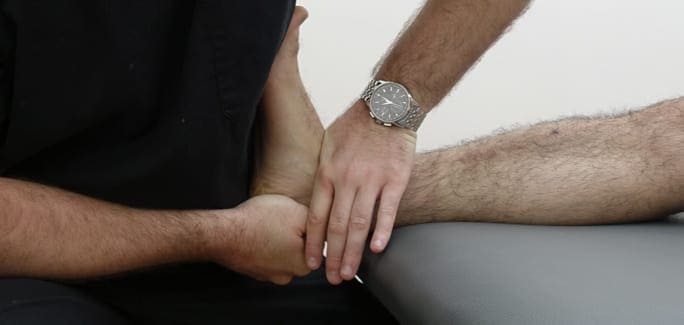August 14, 2023

Peroneal Tendinopathy, also called peroneal tendinitis, is a relatively rare but painful tendon injury that results from damage and degeneration of a peroneal tendon in the foot. The condition is most often associated with running, but basketball players, dancers and other athletes in sports that involve jumping and landing are also prone to the condition. PT is characterized by pain that begins near the ankle at the outside of the foot, and runs up the outer lower leg.
Each foot has two peroneal tendons, longus and the brevis, and tendinopathy can occur in either or both tendons. The tendons connect the peroneus longus and the peroneus brevis muscles toes.
Damage to the peroneal tendons often occurs from overuse of the muscles during daily running, sports practice, rehearsals and performance. Injuries are most common in people with high arches, which places greater stress on the peroneal tendons. High arches are considered an asset in dancers, placing them at greater risk. Faster running speeds also increase peroneal tendon workload, and peroneal tendinopathy often accompanies an ankle sprain. The condition worsens with continued activity and improves with rest.
To differentiate peroneal tendinopathy from other sources of foot pain, a through health histo visual the internal structures of your foot and ankle in real time, with feedback from the athlete facilitating an accurate diagnosis.
Other diagnostic tests and assessments may include:
Once the therapist has confirmed an injury to the peroneal tendon, an individualized treatment plan will be designed. Treatment may include:
Treatment at NYDNR is holistic, individualized and multi-modal. If you are experiencing pain in your foot and ankle, failure today, and see why we are the foremost clinic for foot and ankle rehabilitation in NYC.
Dr. Lev Kalika is a world-recognized expert in musculoskeletal medicine. with 20+ years of clinical experience in diagnostic musculoskeletal ultrasonography, rehabilitative sports medicine and conservative orthopedics. In addition to operating his clinical practice in Manhattan, he regularly publishes peer-reviewed research on ultrasound-guided therapies and procedures. He serves as a peer reviewer for Springer Nature.
Dr. Kalika is an esteemed member of multiple professional organizations, including: